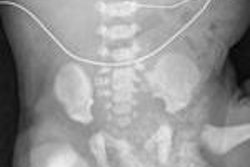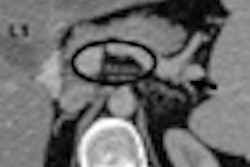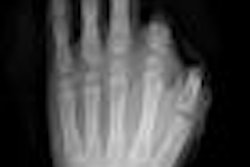Emergency chest CT scans are infrequently warranted for a child with blunt chest trauma, with chest x-rays being equally appropriate in the vast majority of cases, according to research from Riley Hospital for Children in Indianapolis.
Pediatric radiologists and surgeons at the institution came to this conclusion after analyzing four years of medical records of children admitted to the emergency department with blunt chest trauma. Their surprising findings are published in the July issue of the Journal of Trauma (July 2009, Vol. 67:1, pp. 23-28).
The number of CT exams ordered by emergency department physicians has steadily increased for both adults and children in the past decade. For many pediatric healthcare providers, cross-sectional imaging is a prerequisite to treating traumatic injury, lead author Dr. Troy Markel, a sixth-year surgical resident, and colleagues wrote. But is this an appropriate protocol, in view of the fact that a CT scan has a 100-fold higher average radiation dose than a plain chest radiograph?
Markel and colleagues decided to analyze trends in the use of chest CT and portable chest x-ray exams ordered for children who presented with chest trauma symptoms, as well as analyze the utility and effects of these imaging tests in the clinical management of patients. They queried the hospital's billing database to identify all patients 16 years of age or younger, for whom the emergency department ordered chest CT scans from 2001 through 2005.
Due to a database glitch, complete information for 2003 was not available. So the researchers divided the data into two time periods for comparison: 2001/2002 and 2004/2005. The group identified 333 children, ranging in age from 23 days to 16 years. The majority of patients had been injured in motor vehicle collisions (86.5%), followed by falls (6%), bicycle collisions (5%), sports injuries (1.2%), assault and abuse (0.9%), horse-related accidents (0.6%), and crush injuries (0.6%).
The number of chest CTs ordered averaged 5.5% of all patients presenting with blunt trauma injury in 2001 and 2002. This number almost doubled, to 10.5%, in 2004 and 2005.
For patients who underwent chest CT, in 2001 and 2002 26% did not have an initial chest x-ray, compared with 44% in 2004 and 2005. And as chest x-rays decreased, and chest CT exams increased, the number of negative CT scans doubled from an average rate of 25% in 2001 and 2002 to 50% in 2004 and 2005.
Only 20% of the chest CT scans ordered revealed positive findings for intrathoracic trauma. Emergency physicians ordered an initial chest x-ray for 42 children, or 65% of this group of 65 patients with positive findings. With the exception of two patients, findings from the chest CT exam did not alter the patients' clinical management.
Three of the 42 children had abnormal chest x-rays that would have necessitated a chest CT exam. The scout image of the chest CT showed severe intrathoracic trauma for only three patients; the CT exam could have been terminated at that point for the other 39 children. These six children required immediate surgical intervention, and they were the only ones who clinically benefited from having a chest CT exam, according to the researchers.
The primary reason that trauma centers order thoracic CT exams is to rule out life-threatening aortic or great vessel injuries. The signs for aortic injury are essentially the same on a chest radiograph, the authors contend. They believe that a chest x-ray is sufficient to identify patients with potentially life-threatening intrathoracic injuries who require additional imaging procedures or immediate surgery.
Based on their findings, these pediatric surgeons and radiologists at Riley believe that CT exams may be overused, and evidence-based protocols should be developed by a multidisciplinary team of emergency pediatric physicians, radiologists, and trauma surgeons.
By Cynthia E. Keen
AuntMinnie.com staff writer
July 17, 2009
Related Reading
CT not useful for pediatric headache patients, July 6, 2009
Radiation dose awareness leads to drop in pediatric CT usage, December 12, 2008
Studies address need to reduce CT dose in emergency settings, October 17, 2008
Use of pediatric head CT growing steadily in emergency departments, May 4, 2004
Copyright © 2009 AuntMinnie.com



















